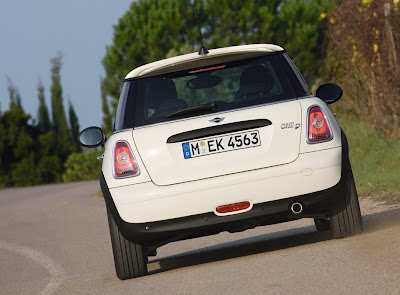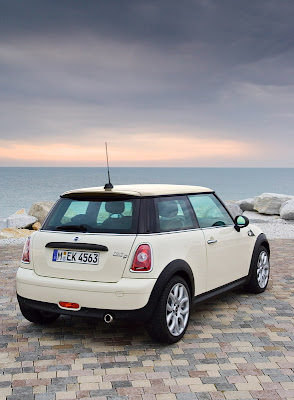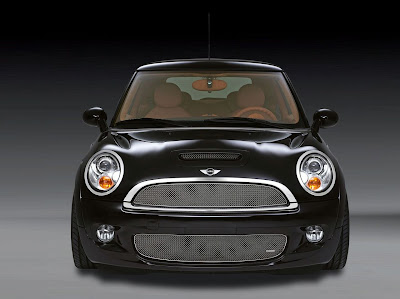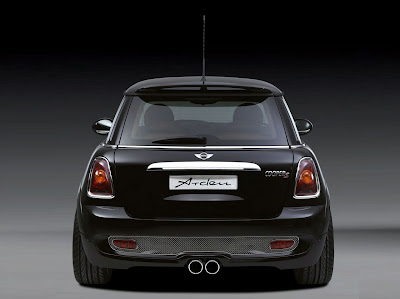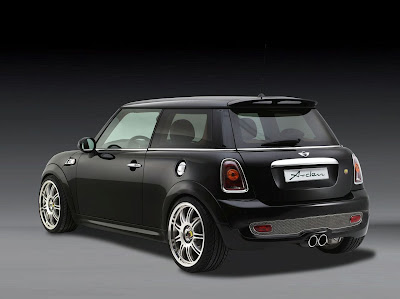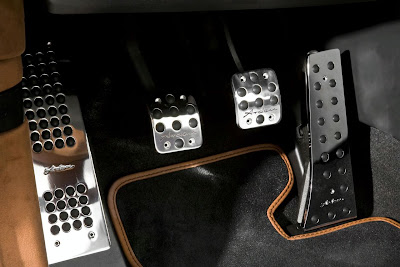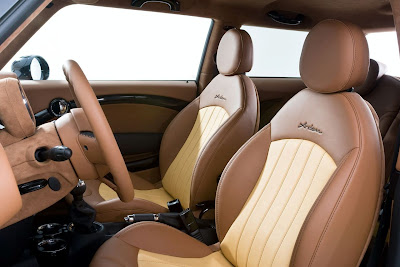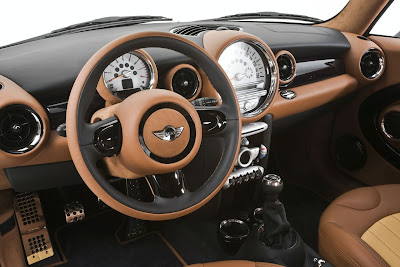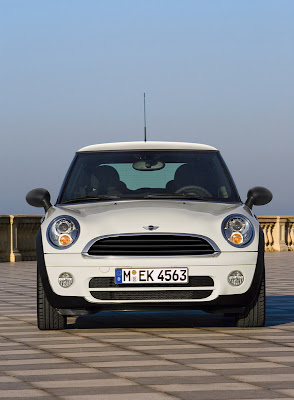
The MINI model family is set to welcome another new arrival. A new entry-level diesel model will be launched in September 2009 and promises to deliver exceptionally economical driving fun. The MINI One D showcases the qualities of its state-of-the-art diesel engine as part of an attractive entry-level package. The drive system is based on the 1.6-litre diesel engine from the MINI Cooper D. Featuring a turbocharger and common rail direct injection, the new version of this four-cylinder unit develops peak output of 66 kW/90 hp and maximum torque of 215 Nm. Like the petrol-driven MINI One, the new MINI One D provides a particularly economical entry point into the world of the MINI brand, which is defined by driving fun and premium quality.
Instantaneous pulling power and impressively low fuel consumption are also keynote attributes of the MINI One D. Its 1.6-litre four-cylinder engine features common rail direct injection technology and a turbocharger with variable turbine geometry, which ensures optimum power development through the entire engine speed range. Boasting an exceptionally lightweight aluminium construction, this four-cylinder diesel powerplant develops 66 kW/90 hp at 4,000 rpm and sources its peak torque of 215 Nm from as low down as 1, 750 rpm. The MINI One D completes the sprint from 0 to 100 km/h in 11.5 seconds and hits a top speed of 182 km/h.
The new MINI One D is also fitted as standard with a diesel particulate filter and numerous efficiency-enhancing measures, which make an effective contribution to reducing fuel consumption and emissions. These include Brake Energy Regeneration – which concentrates power generation for the on-board power supply on periods when the car is braking and coasting – and the Auto Start Stop Function, which switches off the engine when the car stops at traffic lights or a junction. The MINI One D also comes with a Shift Point Display, which advises the driver of a good time to change gear to ensure efficient driving. The average fuel consumption of the MINI One D in the EU test cycle is 3.9 litres per 100 kilometres, while CO2 emissions stand at 104 grams per kilometre.
A precise six-speed manual gearbox makes every burst of acceleration in the new diesel model a genuine pleasure. As with all the brand’s models, the drive is sent to the front wheels of the MINI One D and – like its siblings – a central feature of its character is the go-kart feeling typical of the brand. This delightfully agile handling is underpinned by a combination of a McPherson spring-strut front axle construction, multi-link rear suspension and Electrical Power Steering (EPS). Speed-sensitive steering assistance guarantees both low steering forces when parking and precise responses at motorway speeds. In addition, EPS also enhances the efficiency of the car; the electric motor is only active, and therefore only uses energy, when steering assistance is required or desired by the driver. Among the safety features on board the MINI One D are front airbags and side head/thorax airbags, and all four seats are fitted with three-point inertia-reel seat belts. All restraint systems are controlled by a central safety electronics system complete with sensors, and are applied as required by the type and intensity of the collision.
The standard equipment of the new entry-level diesel MINI matches that of the MINI One and its appearance likewise shows parallels with its petrol-driven equivalent. The MINI One D also has its roof in body colour, while its model-specific take on the typically MINI hexagonal radiator grille stands out from the other model variants with a chrome surround and black cross louvres. Like the MINI One, the MINI One D also has black mirror caps and a black boot lid handle, and the chromed tailpipe is the same as that on the exhaust system of the MINI Cooper D.
The market launch of the new entry-level diesel variant adds further to the variety of the MINI model range. In addition to the two diesel models – the MINI One D and MINI Cooper D – customers can also choose from the petrol-driven MINI One, MINI Cooper and MINI Cooper S, and the particularly sports-oriented MINI John Cooper Works. All models are built according to the strict quality standards of the BMW Group at the MINI plant in Oxford. The MINI One D is also available with the extensive selection of optional extras and accessories which allow every MINI to become a personalised one-off example of its kind.
